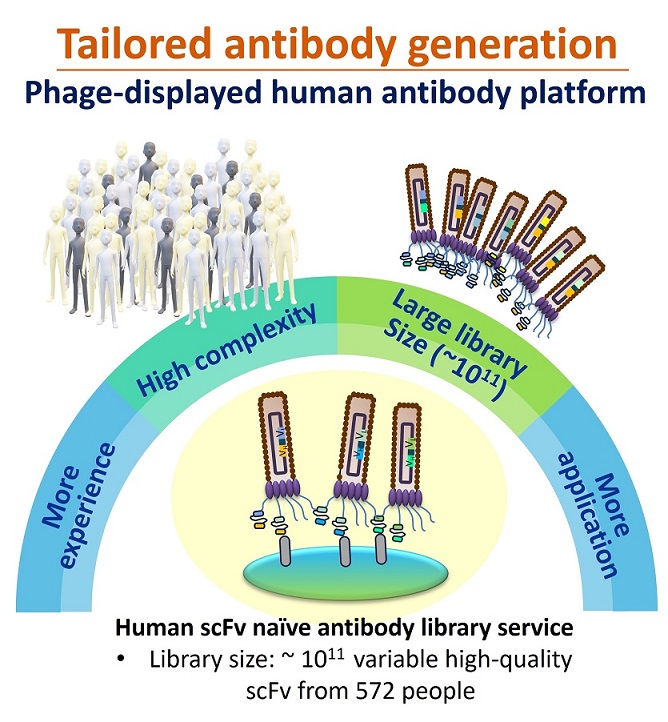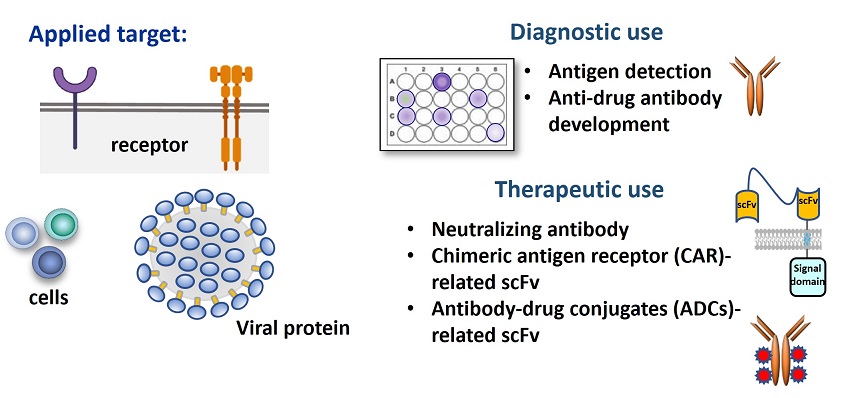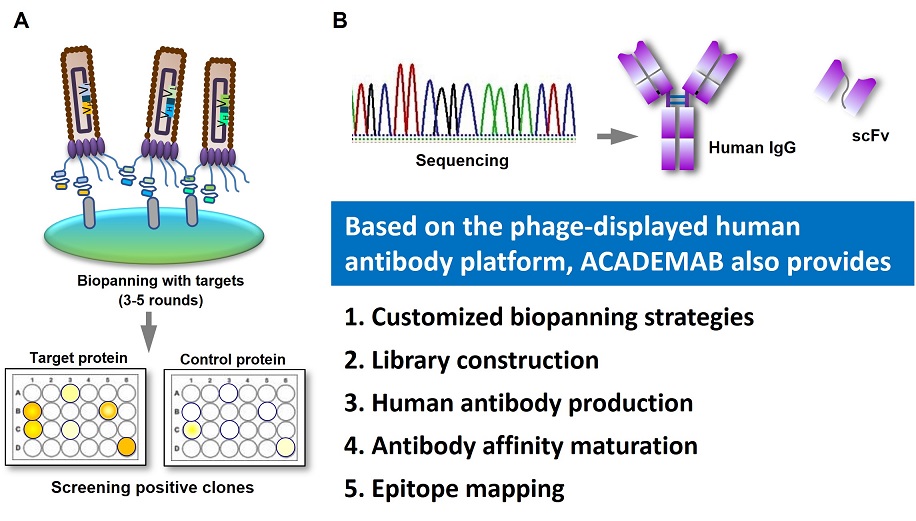Phage display
Phage display is a molecular biology technique, that can be used to discover antibody or binding epitope by inserting the DNA sequence of scFv or peptide into the appropriate position of phage coat protein structural gene to be further expressed and displayed on the phage surface for a high throughput screening of desired targets.


Status

Feature
- Widely-used format: scFv (single chain variable fragment), which can be utilized alone, transformed into fusion protein or desired isotype of monoclonal antibody.
- High diversity: AcadeMab’s human scFv library was built from 572 individual donors, containing a size of ~1011 variable high-quality scFv.
Short timeline: Selection of desired phage clones can be completed in 15 days. - Animal-free: the whole process of protein selection can be conducted without animal sacrificing. There is no immunization procedure in animal, thereby saving many of the steps and time required compared to traditional approach that involves immunization.
Application
- The selected scFv, transformed fusion protein, or monoclonal antibody can be applied for therapeutic or diagnostic purposes.
The selected scFv can be used as a part of antibody drug conjugate (ADC) or cell therapy. - Phage display technique is good for screening of toxic antigens or autoantigens. AcadeMab offers affinity maturation platform for optimization of antibody utilizing customized scFv phage display library.
- We also provide epitope mapping services for customer needs utilizing phage display peptide library.

Status
The standardized procedure for this technology platform is well established. The options of standardized/customized fee-for-service or co-development are open to discussion.


